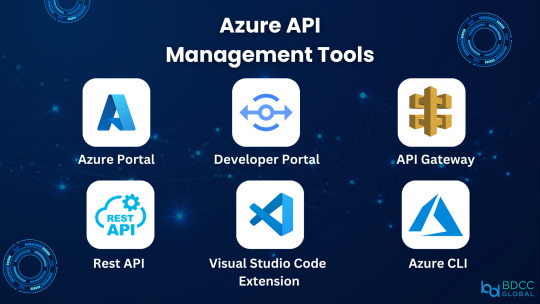#Azure Integration
Explore tagged Tumblr posts
Text
🚀 Power Automate vs Azure Logic Apps – Which one to choose? Explore this in-depth comparison covering features, licensing, use cases, pros/cons, security, and more. A must-read for automation enthusiasts and IT decision-makers! #PowerAutomate #AzureLogicApps #Microsoft365 #Automation #LowCode #Azure
#Azure Integration#Azure Logic Apps#Cloud Automation#Enterprise Automation#Logic Apps vs Power Automate#Low Code#Microsoft 365#Power Automate#RPA#Workflow Automation
0 notes
Text
Microsoft Azure stands out as an ideal platform for cloud migration due to its comprehensive services, strong hybrid cloud capabilities, scalability, and security features. Additionally, Azure integrates seamlessly with the Microsoft ecosystem, offering businesses a reliable global platform to optimize their cloud strategies.
#Azure cloud migration#Microsoft Azure#cloud computing#hybrid cloud#cloud scalability#cloud security#Azure integration#cloud services#digital transformation#business agility
0 notes
Text
Abathur

At Abathur, we believe technology should empower, not complicate.
Our mission is to provide seamless, scalable, and secure solutions for businesses of all sizes. With a team of experts specializing in various tech domains, we ensure our clients stay ahead in an ever-evolving digital landscape.
Why Choose Us? Expert-Led Innovation – Our team is built on experience and expertise. Security First Approach – Cybersecurity is embedded in all our solutions. Scalable & Future-Proof – We design solutions that grow with you. Client-Centric Focus – Your success is our priority.
#Software Development#Web Development#Mobile App Development#API Integration#Artificial Intelligence#Machine Learning#Predictive Analytics#AI Automation#NLP#Data Analytics#Business Intelligence#Big Data#Cybersecurity#Risk Management#Penetration Testing#Cloud Security#Network Security#Compliance#Networking#IT Support#Cloud Management#AWS#Azure#DevOps#Server Management#Digital Marketing#SEO#Social Media Marketing#Paid Ads#Content Marketing
2 notes
·
View notes
Text

Seamless Integration: Dive into the Power of Azure's API Management Toolset.
Elevate your connectivity, security, and efficiency in one robust solution.
2 notes
·
View notes
Text
Revolutionize Your Business with SQL Server 2022's Cloud Connectivity
Empowering Innovation: Unlocking the Future with SQL Server 2022
In today’s rapidly evolving digital landscape, staying ahead requires leveraging cutting-edge technology that seamlessly integrates with the cloud. SQL Server 2022 stands at the forefront of this revolution, offering a powerful, cloud-connected database platform designed to transform your business operations and unlock new opportunities. With its innovative features and enhanced security, SQL Server 2022 provides a comprehensive solution for modern enterprises aiming to harness the full potential of their data.
One of the most compelling aspects of SQL Server 2022 is its deep integration with Azure, Microsoft's trusted cloud platform. This integration enables businesses to build hybrid environments that combine on-premises infrastructure with cloud capabilities, offering unparalleled flexibility and scalability. Whether you’re managing a small application or a large enterprise system, SQL Server 2022 ensures seamless data movement and synchronization across environments, reducing latency and improving overall performance.
The platform's built-in query intelligence is a game-changer, providing insights and optimizations that enhance database performance. Intelligent query processing capabilities automatically adapt to workload patterns, delivering faster results and reducing resource consumption. This means your team can focus more on strategic initiatives rather than troubleshooting performance issues, ultimately accelerating your digital transformation journey.
Security remains a top priority with SQL Server 2022’s advanced features like ledger technology, which offers cryptographic verification of data integrity. This innovation ensures that your data remains tamper-proof and trustworthy, a critical requirement in industries such as finance, healthcare, and government. Combined with robust encryption and role-based access controls, SQL Server 2022 provides a fortified environment to safeguard sensitive information against evolving cyber threats.
Furthermore, SQL Server 2022 simplifies data integration with its support for various data sources, formats, and platforms. Whether consolidating data lakes, integrating with business intelligence tools, or supporting real-time analytics, the platform offers the versatility needed for comprehensive data management strategies. This seamless connectivity empowers organizations to derive actionable insights faster and make more informed decisions.
Businesses seeking to optimize their data infrastructure should consider the cost-effective advantages of licensing options like the sql server 2022 standard license price. Investing in SQL Server 2022 enables organizations not only to future-proof their operations but also to capitalize on the cloud’s agility and intelligence.
In conclusion, SQL Server 2022 is more than just a database; it’s a strategic asset that propels your business into the cloud-connected era. By harnessing its innovative features, enhanced security, and seamless integration capabilities, your organization can achieve greater efficiency, scalability, and resilience. Embrace the future today with SQL Server 2022 and turn your data into your most valuable competitive advantage.
#sql server 2022 features#cloud-connected database#SQL Server security enhancements#seamless data integration#enterprise data management#Azure-enabled SQL Server
0 notes
Text
How to Connect GitHub Pull Requests to Azure DevOps Tickets: A Comprehensive Guide-OpsNexa!
Learn how to connect Azure DevOps work items to GitHub pull requests for easy project tracking and collaboration. How to Link Azure DevOps Tickets to GitHub Pull Requests, This guide discusses how to increase traceability and streamline development processes using Azure Pipelines, GitHub extensions, commit messages, and smart commits.
#Azure DevOps GitHub Integration#Link Work Items to PR GitHub#Azure DevOps GitHub PR Sync#Connect GitHub PR with Azure DevOps
0 notes
Text
From Firewall to Encryption: The Full Spectrum of Data Security Solutions

In today’s digitally driven world, data is one of the most valuable assets any business owns. From customer information to proprietary corporate strategies, the protection of data is crucial not only for maintaining competitive advantage but also for ensuring regulatory compliance and customer trust. As cyber threats grow more sophisticated, companies must deploy a full spectrum of data security solutions — from traditional firewalls to advanced encryption technologies — to safeguard their sensitive information.
This article explores the comprehensive range of data security solutions available today and explains how they work together to create a robust defense against cyber risks.
Why Data Security Matters More Than Ever
Before diving into the tools and technologies, it’s essential to understand why data security is a top priority for organizations worldwide.
The Growing Threat Landscape
Cyberattacks have become increasingly complex and frequent. From ransomware that locks down entire systems for ransom to phishing campaigns targeting employees, and insider threats from negligent or malicious actors — data breaches can come from many angles. According to recent studies, millions of data records are exposed daily, costing businesses billions in damages, legal penalties, and lost customer trust.
Regulatory and Compliance Demands
Governments and regulatory bodies worldwide have enacted stringent laws to protect personal and sensitive data. Regulations such as GDPR (General Data Protection Regulation), HIPAA (Health Insurance Portability and Accountability Act), and CCPA (California Consumer Privacy Act) enforce strict rules on how companies must safeguard data. Failure to comply can result in hefty fines and reputational damage.
Protecting Brand Reputation and Customer Trust
A breach can irreparably damage a brand’s reputation. Customers and partners expect businesses to handle their data responsibly. Data security is not just a technical requirement but a critical component of customer relationship management.
The Data Security Spectrum: Key Solutions Explained
Data security is not a single tool or tactic but a layered approach. The best defense employs multiple technologies working together — often referred to as a “defense-in-depth” strategy. Below are the essential components of the full spectrum of data security solutions.
1. Firewalls: The First Line of Defense
A firewall acts like a security gatekeeper between a trusted internal network and untrusted external networks such as the Internet. It monitors incoming and outgoing traffic based on pre-established security rules and blocks unauthorized access.
Types of Firewalls:
Network firewalls monitor data packets traveling between networks.
Host-based firewalls operate on individual devices.
Next-generation firewalls (NGFW) integrate traditional firewall features with deep packet inspection, intrusion prevention, and application awareness.
Firewalls are fundamental for preventing unauthorized access and blocking malicious traffic before it reaches critical systems.
2. Intrusion Detection and Prevention Systems (IDS/IPS)
While firewalls filter traffic, IDS and IPS systems detect and respond to suspicious activities.
Intrusion Detection Systems (IDS) monitor network or system activities for malicious actions and send alerts.
Intrusion Prevention Systems (IPS) not only detect but also block or mitigate threats in real-time.
Together, IDS/IPS adds an extra layer of vigilance, helping security teams quickly identify and neutralize potential breaches.
3. Endpoint Security: Protecting Devices
Every device connected to a network represents a potential entry point for attackers. Endpoint security solutions protect laptops, mobile devices, desktops, and servers.
Antivirus and Anti-malware: Detect and remove malicious software.
Endpoint Detection and Response (EDR): Provides continuous monitoring and automated response capabilities.
Device Control: Manages USBs and peripherals to prevent data leaks.
Comprehensive endpoint security ensures threats don’t infiltrate through vulnerable devices.
4. Data Encryption: Securing Data at Rest and in Transit
Encryption is a critical pillar of data security, making data unreadable to unauthorized users by converting it into encoded text.
Encryption at Rest: Protects stored data on servers, databases, and storage devices.
Encryption in Transit: Safeguards data traveling across networks using protocols like TLS/SSL.
End-to-End Encryption: Ensures data remains encrypted from the sender to the recipient without exposure in between.
By using strong encryption algorithms, even if data is intercepted or stolen, it remains useless without the decryption key.
5. Identity and Access Management (IAM)
Controlling who has access to data and systems is vital.
Authentication: Verifying user identities through passwords, biometrics, or multi-factor authentication (MFA).
Authorization: Granting permissions based on roles and responsibilities.
Single Sign-On (SSO): Simplifies user access while maintaining security.
IAM solutions ensure that only authorized personnel can access sensitive information, reducing insider threats and accidental breaches.
6. Data Loss Prevention (DLP)
DLP technologies monitor and control data transfers to prevent sensitive information from leaving the organization.
Content Inspection: Identifies sensitive data in emails, file transfers, and uploads.
Policy Enforcement: Blocks unauthorized transmission of protected data.
Endpoint DLP: Controls data movement on endpoint devices.
DLP helps maintain data privacy and regulatory compliance by preventing accidental or malicious data leaks.
7. Cloud Security Solutions
With increasing cloud adoption, protecting data in cloud environments is paramount.
Cloud Access Security Brokers (CASB): Provide visibility and control over cloud application usage.
Cloud Encryption and Key Management: Secures data stored in public or hybrid clouds.
Secure Configuration and Monitoring: Ensures cloud services are configured securely and continuously monitored.
Cloud security tools help organizations safely leverage cloud benefits without exposing data to risk.
8. Backup and Disaster Recovery
Even with the best preventive controls, breaches, and data loss can occur. Reliable backup and disaster recovery plans ensure business continuity.
Regular Backups: Scheduled copies of critical data stored securely.
Recovery Testing: Regular drills to validate recovery procedures.
Ransomware Protection: Immutable backups protect against tampering.
Robust backup solutions ensure data can be restored quickly, minimizing downtime and damage.
9. Security Information and Event Management (SIEM)
SIEM systems collect and analyze security event data in real time from multiple sources to detect threats.
Centralized Monitoring: Aggregates logs and alerts.
Correlation and Analysis: Identifies patterns that indicate security incidents.
Automated Responses: Enables swift threat mitigation.
SIEM provides comprehensive visibility into the security posture, allowing proactive threat management.
10. User Education and Awareness
Technology alone can’t stop every attack. Human error remains one of the biggest vulnerabilities.
Phishing Simulations: Train users to recognize suspicious emails.
Security Best Practices: Ongoing training on password hygiene, device security, and data handling.
Incident Reporting: Encourage quick reporting of suspected threats.
Educated employees act as a crucial line of defense against social engineering and insider threats.
Integrating Solutions for Maximum Protection
No single data security solution is sufficient to protect against today’s cyber threats. The most effective strategy combines multiple layers:
Firewalls and IDS/IPS to prevent and detect intrusions.
Endpoint security and IAM to safeguard devices and control access.
Encryption to protect data confidentiality.
DLP and cloud security to prevent leaks.
Backup and SIEM to ensure resilience and rapid response.
Continuous user training to reduce risk from human error.
By integrating these tools into a cohesive security framework, businesses can build a resilient defense posture.
Choosing the Right Data Security Solutions for Your Business
Selecting the right mix of solutions depends on your organization's unique risks, compliance requirements, and IT environment.
Risk Assessment: Identify critical data assets and potential threats.
Regulatory Compliance: Understand applicable data protection laws.
Budget and Resources: Balance costs with expected benefits.
Scalability and Flexibility: Ensure solutions grow with your business.
Vendor Reputation and Support: Choose trusted partners with proven expertise.
Working with experienced data security consultants or managed security service providers (MSSPs) can help tailor and implement an effective strategy.
The Future of Data Security: Emerging Trends
As cyber threats evolve, data security technologies continue to advance.
Zero Trust Architecture: Assumes no implicit trust and continuously verifies every access request.
Artificial Intelligence and Machine Learning: Automated threat detection and response.
Quantum Encryption: Next-generation cryptography resistant to quantum computing attacks.
Behavioral Analytics: Identifying anomalies in user behavior for early threat detection.
Staying ahead means continuously evaluating and adopting innovative solutions aligned with evolving risks.
Conclusion
From the traditional firewall guarding your network perimeter to sophisticated encryption safeguarding data confidentiality, the full spectrum of data security solutions forms an essential bulwark against cyber threats. In a world where data breaches can cripple businesses overnight, deploying a layered, integrated approach is not optional — it is a business imperative.
Investing in comprehensive data security protects your assets, ensures compliance, and most importantly, builds trust with customers and partners. Whether you are a small business or a large enterprise, understanding and embracing this full spectrum of data protection measures is the key to thriving securely in the digital age.
#azure data science#azure data scientist#microsoft azure data science#microsoft certified azure data scientist#azure databricks#azure cognitive services#azure synapse analytics#data integration services#cloud based ai services#mlops solution#mlops services#data governance. data security services#Azure Databricks services
0 notes
Video
youtube
Terraform on Azure - Virtual Machines ScaleSets Manual scaling | Infrast...
#youtube#Learn how to manually scale Azure Virtual Machines using Terraform's count meta-argument and integrate them with a Standard Load Balancer! I
0 notes
Text
Integrate AEM with Azure Storage SDK
Let’s see how to integrate AEM with Azure SDK for uploading AEM assets to Azure blob storage. Recently i worked on a very interesting use case, where we need to move old/deprecated assets that are no longer i use to a separate storage on Azure and remove them from AEM. In order to achieve this we need to first integrate AEM with Azure SDK and then write a custom servlet to the job. The major…
0 notes
Text
Day 1: What is Microsoft Fabric? A Complete Introduction to Microsoft’s Unified Data Platform
What is Microsoft Fabric? Complete Guide for Beginners (2025) Published: July 2, 2025 🚀 Introduction In today’s data-driven world, organizations are constantly challenged with managing, transforming, analyzing, and visualizing ever-growing datasets from disparate sources. Enter Microsoft Fabric — a revolutionary, end-to-end data platform that combines the best of Power BI, Azure Data Factory,…
#ai#artificial-intelligence#azure#cloud#Data Engineering#Fabric Lakehouse#Fabric vs Synapse#Microsoft Fabric#Microsoft Fabric 2025#Microsoft Fabric architecture#Microsoft Fabric explained#Microsoft Fabric for beginners#Microsoft Fabric overview#Microsoft Fabric tutorial#Microsoft OneLake#Power BI in Fabric#Power BI integration#Real-time Analytics#Spark in Fabric#technology#Unified Data Platform#What is Microsoft Fabric
0 notes
Text
Effective monitoring and management are crucial for maintaining the performance and reliability of Azure integration solutions. This guide provides an overview of tools and techniques for monitoring Azure integrations, identifying potential issues, and ensuring seamless operations. Learn how to use Azure Monitor, Application Insights, and other tools to track performance metrics, troubleshoot problems, and optimize your integration workflows. Enhance your ability to manage Azure integrations and ensure continuous business operations.
0 notes
Text
Data Integration Tool to Drive Your Business Success - IFI Tech
Data integration tools play a vital role here in ensuring seamless data access and delivery. Applications can interact much faster and effortlessly with efficient data integration tools.
#ifi techsolutions#microsoft azure#microsoft partner#microsoft#cloud computing#data integration#data warehouse#dataanalysis#datamanagement#information technology#data warehousing#data integration tool
0 notes
Video
tumblr
Why spend more when your current storage platforms can do the heavy lifting? DocStore integrates seamlessly with SharePoint, Google Drive, and Azure to save you Salesforce storage costs while keeping your documents accessible and organized. Visit https://www.exmcloud.com/docstore/ to learn more!
1 note
·
View note
Text

What’s the main challenge in your workflow? Share your insights, and we’ll demonstrate how Power Automate can enhance efficiency and streamline your business processes through our comprehensive training course.
Join Now: https://meet.goto.com/707505309
Attend Online New Batch on Power Apps and Power Automation course by Mr. Rajesh.
Demo on: 22/10/2024 @8:00 AM IST
Contact us: +919989971070
Visit us: https://www.visualpath.in/online-powerapps-training.html
#visualpath#microsoft#powerapps#powerbi#powerplatform#dynamics#office#sharepoint#msflow#it#azure#powervirtualagents#microsoftteams#automation#microsoftflow#msdyn#rpa#cloud#msteams#webinar#microsoftdynamics#microsoftpowerapps#online#integrations#microsoftpowerautomate#technology#innovation#cloudcomputing
1 note
·
View note
Text
Azure DevOps & CI/CD Demystified: Deliver Software Faster with Automation | OpsNexa
Learn what Azure DevOps and CI/CD (Continuous Integration/Continuous Delivery) are and how they work together to streamline software development. This comprehensive guide explains how Azure DevOps automates the build, test, and deployment processes, What Azure DevOps and CI/CD, helping teams deliver high-quality software faster. Whether you're new to DevOps or looking to optimize your processes, this article provides key insights into using Azure DevOps for modern software delivery and continuous integration.
#Azure Devops#Microsoft-azure-devops#Azure-pipelines#Azure-devops-services#Azure-devops-consulting#Azure-devops-integration
0 notes